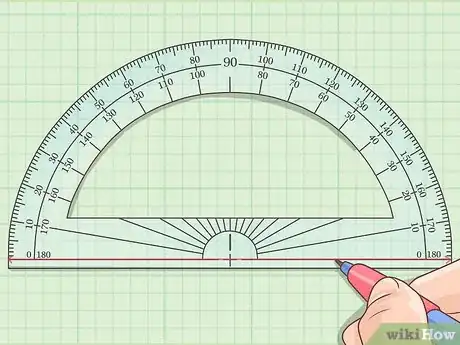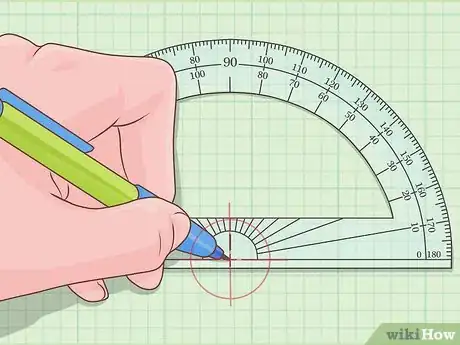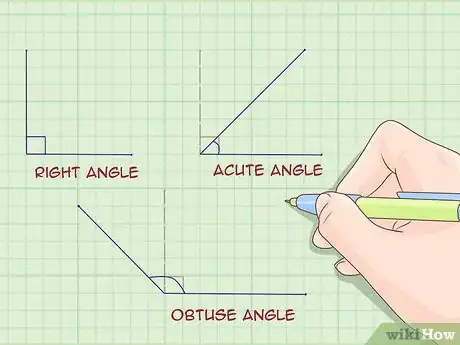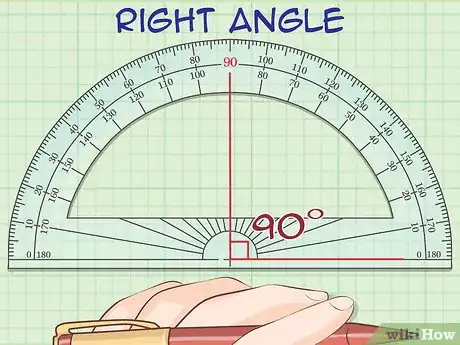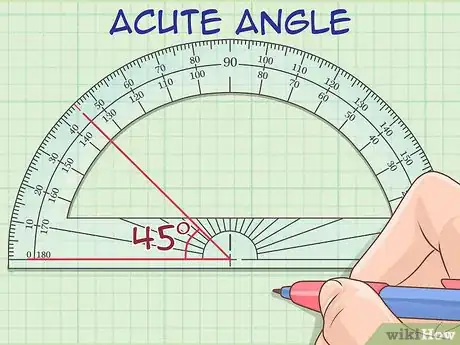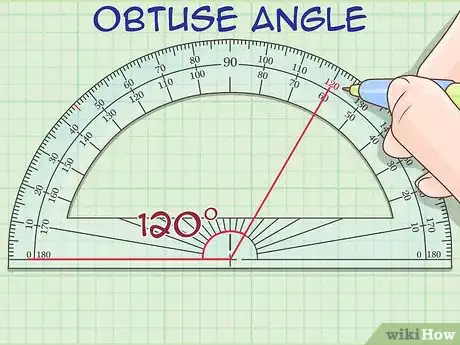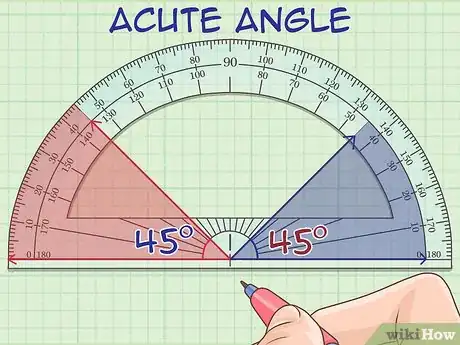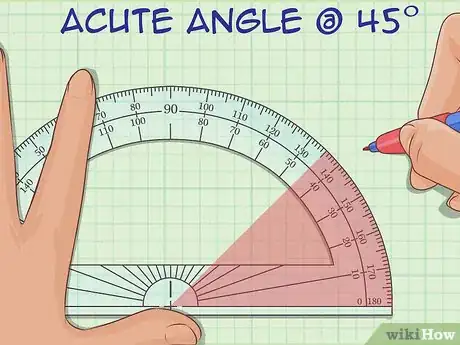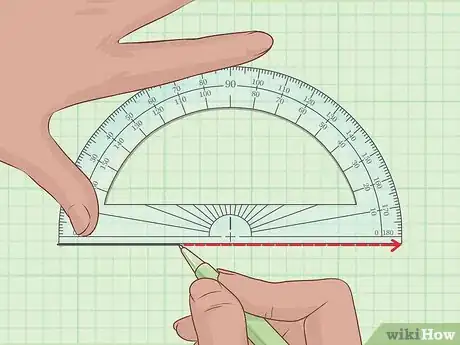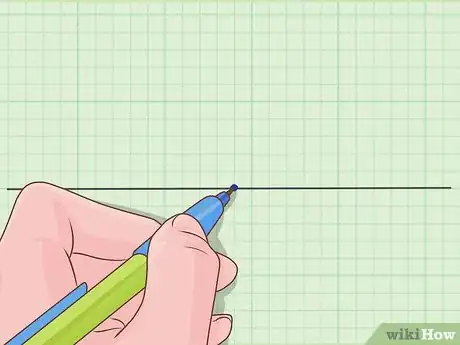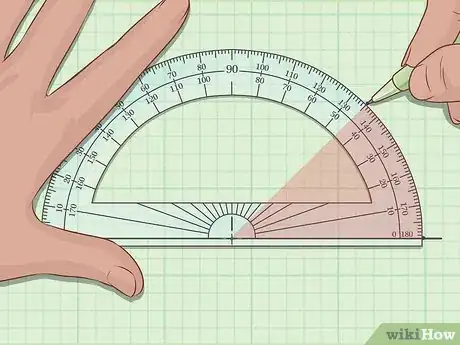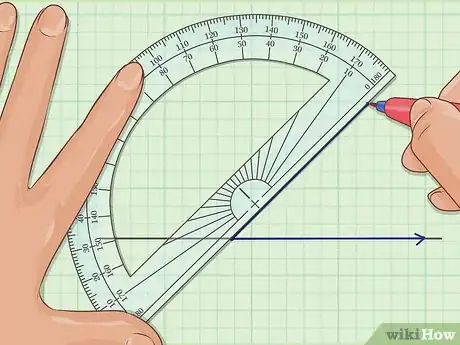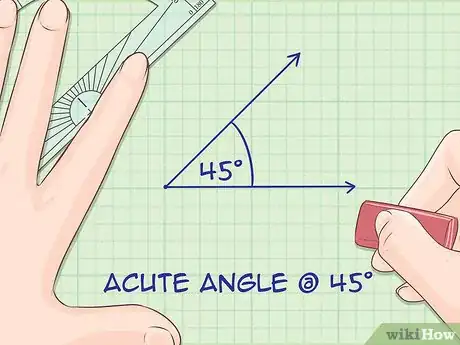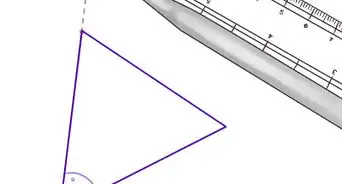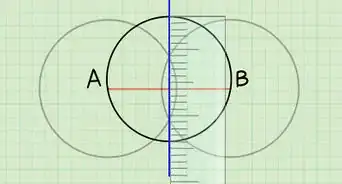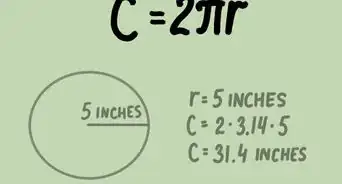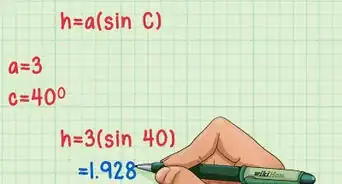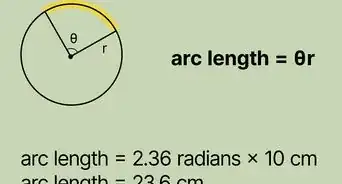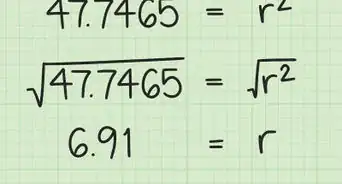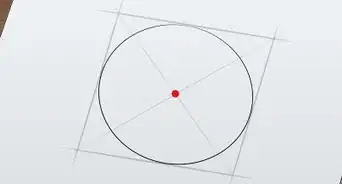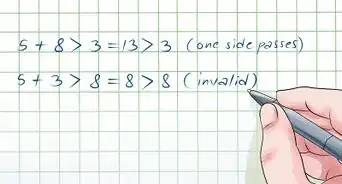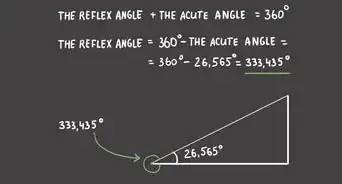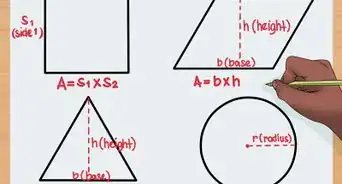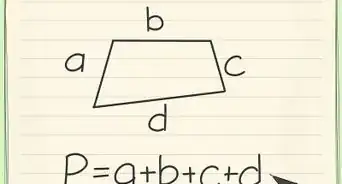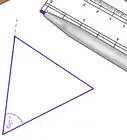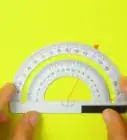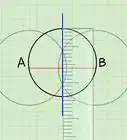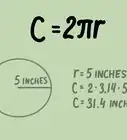This article was co-authored by wikiHow Staff. Our trained team of editors and researchers validate articles for accuracy and comprehensiveness. wikiHow's Content Management Team carefully monitors the work from our editorial staff to ensure that each article is backed by trusted research and meets our high quality standards.
There are 7 references cited in this article, which can be found at the bottom of the page.
This article has been viewed 45,329 times.
Learn more...
Using a protractor can be tricky, especially if you are using one with two sets of numbers. If you understand the concept of acute and obtuse angles, however, learning how to use a protractor is easy. It is first necessary to understand the features on a protractor, so that you understand how to use it. Once you have this understanding, you can quickly use a protractor to make any size angle between 0 and 180 degrees.
Steps
Understanding the Features of a Protractor
-
1Locate the base line. This horizontal line is at the bottom of the protractor. One vector of your angle should always line up with the base line.[1]
- Since a straight line is 180 degrees, the base line marks a 180-degree angle.
-
2Locate the origin hole. This is a small hole at the midpoint of the base line. You use this hole to create the vertex of the angle. The vertex is the point at which the two vectors meet, creating an angle.[2]Advertisement
-
3Locate the degree measurements. Most protractors have two sets of numbers, an outer set and an inner set. Which set of numbers you use will depend on whether your angle opens to the right, or opens to the left. The sets of numbers can be set up differently on each protractor, so you need to figure out for yourself which set of numbers to use. To determine which set of numbers to use, you need to understand right, acute, and obtuse angles.[3]
Classifying Angles
-
1Identify a right angle. A right angle has a measurement of 90 degrees.[4] A 90-degree angle will look like the corner of a square. The two vectors of the angle are perpendicular, and open exactly halfway towards a straight line (which is 180 degrees).
- When you line up the base line of the protractor with one vector of a right angle, the other vector will line up with the 90-degree mark of the protractor. This is halfway between either side of the protractor. Both the inner and outer sets of numbers on the protractor will show 90 degrees at this point.
-
2Identify an acute angle. An acute angle has a measurement of less than 90 degrees.[5] This means that the two vectors will be closer together than they are in a 90-degree angle. They will open less than halfway towards a straight line. If the angle you are drawing is less than 90 degrees, make sure you use the set of numbers that gives you the smaller angle.
- For example, a 45-degree angle is acute, because 45 is less than 90. If you line up the base line of the protractor with one vector of a 45-degree angle, the other vector will line up with the 45-degree mark and the 135-degree mark of the protractor. You will know which line to look at because you know it is an acute angle, and an acute angle should be less open than a 90-degree angle.
-
3Identify an obtuse angle. An obtuse angle has a measurement of more than 90 degrees.[6] The two vectors of an obtuse angle are farther apart than they are in a 90-degree angle. They will open more than halfway to a straight line. If the angle you are drawing is more than 90 degrees, make sure you use the set of numbers that gives you the larger angle.
- For example, a 120-degree angle is obtuse, because 120 is greater than 90. If you line up the base line of the protractor with one vector of a 120-degree angle, the other vector will line up with the 120-degree mark and the 60-degree mark. If you know you are looking for an obtuse angle, you know to use the 120-degree mark, because an obtuse angle should be more open than a 90-degree angle.
-
4Ignore the orientation of the angle. Whether an angle opens to the left or to the right does not affect whether it is right, acute, or obtuse. All that matters is the measurement of the angle in degrees. The way the angle opens only changes the set of numbers you will look at on your protractor.
- For example, if a 45-degree angle opens to the right, you might have to look at the inner set of numbers. But if you were to turn that angle around so that it opens to the left, it would still measure 45 degrees, but this time when you measure it, you would have to look at the outer set of numbers.
Drawing an Angle
-
1Determine the measurement of the angle you are drawing. Note whether the angle is acute or obtuse.
- For example, you might need to draw a 45 degree angle. Since 45 is less than 90, this is an acute angle. That means you will use the set of numbers that gives you the smaller angle, since the angle will open less than halfway towards a straight line.
-
2Draw a straight line. You can do this using a ruler or the straightedge of your protractor. This line will form the first vector of your angle.[7]
- The length of the line does not necessarily matter, but the longer it is, the easier it will be to line it up to the base line. The best method is to draw a line running the length of the protractor’s edge.
-
3Align the origin hole at about the midpoint of the line. Make sure that the base line of the protractor lines up with the line you drew.[8] Draw a midpoint for your reference.
-
4Mark the angle measurement. Make this mark along the outside of the protractor by the appropriate degree mark. To make sure you are making the mark at the correct place, ask yourself the following questions:
- Will my angle open to the right, or to the left?
- Is my angle less (acute) or greater (obtuse) than 90 degrees?
-
5Draw the second vector of the angle. Use a ruler or straightedge to join the origin point on the base line to the degree mark.[9]
-
6Erase any unnecessary lines. You will likely need to erase part of the base line you drew. Otherwise, you may have two angles drawn, and it may be unclear to another person which is your intended angle.
Community Q&A
-
QuestionWhat are angles opening to the left called?
 Community AnswerThe type of angle is not determined by which way it opens. An angle is either acute, right, or obtuse, no matter which way it opens. All that matters is the size of the angle. For example, you can draw a 45 degree angle opening to the left, or opening to the right. Either way, it is an acute angle.
Community AnswerThe type of angle is not determined by which way it opens. An angle is either acute, right, or obtuse, no matter which way it opens. All that matters is the size of the angle. For example, you can draw a 45 degree angle opening to the left, or opening to the right. Either way, it is an acute angle. -
QuestionHow do I use a protractor that doesn't have a hole?
 DonaganTop AnswererUse the outside, curved edge.
DonaganTop AnswererUse the outside, curved edge. -
QuestionWhat about the angle that we want to make in the circle?
 DonaganTop AnswererIf you're referring to a central angle, draw a diameter. Line up the bottom of the protractor with the diameter so that the midpoint of the protractor aligns with the center of the circle. Use the protractor to draw any central angle up to 180°, using another diameter (or radius) to complete the angle.
DonaganTop AnswererIf you're referring to a central angle, draw a diameter. Line up the bottom of the protractor with the diameter so that the midpoint of the protractor aligns with the center of the circle. Use the protractor to draw any central angle up to 180°, using another diameter (or radius) to complete the angle.
References
- ↑ https://www.mathdoubts.com/protractor/
- ↑ https://www.mathdoubts.com/protractor/
- ↑ https://www.mathsisfun.com/geometry/protractor-using.html
- ↑ http://www.mathopenref.com/angleright.html
- ↑ https://www.mathsisfun.com/acute.html
- ↑ https://www.mathsisfun.com/obtuse.html
- ↑ https://www.cuemath.com/geometry/protractor/
- ↑ http://www.mathopenref.com/constdrawangle.html
- ↑ https://www.cuemath.com/geometry/protractor/
